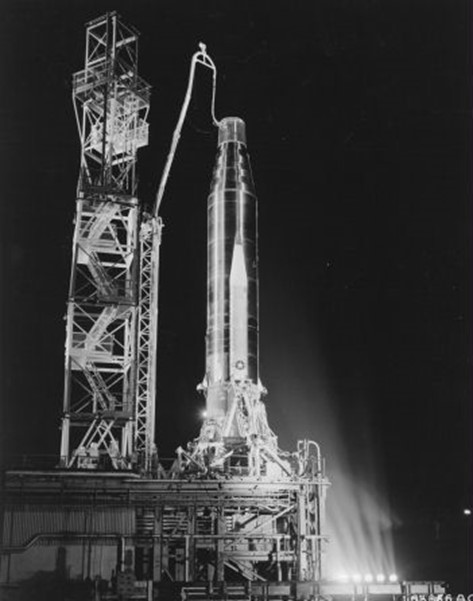ATLAS C FACT SHEET
By Cliff Lethbridge

Atlas C On Launch Pad, Photo Courtesy U.S. Air Force
Classification: Inter-Continental Ballistic Missile Prototype
Length: 82 feet, 6 inches
Diameter: 10 feet
Range: 6,000 miles
Date of First Cape Canaveral Launch: December 23, 1958
Date of Final Cape Canaveral Launch: August 24, 1959
Number of Cape Canaveral Launches: 6
Designed for long-range guidance and nose cone tests, the Atlas C was configured very closely to what would become the operational Atlas ICBM. It incorporated an improved booster/sustainer engine configuration and carried a recoverable nose cone data capsule, which carried instrumentation that recorded valuable in-flight test data. The Atlas C carried two Rocketdyne booster engines, each with a thrust of 165,000 pounds. A single Rocketdyne sustainer engine produced a thrust of 57,000 pounds while two Rocketdyne vernier engines produced a thrust of 1,000 pounds each. All of the engines were fed by liquid oxygen/RP-1 (kerosene) liquid propellant, and all engines were ignited at liftoff. Like its predecessors, the Atlas C used a semi-inertial guidance system supported by radio commands from ground stations. Considered a semi-operational training and test vehicle, an Atlas C was first launched from Cape Canaveral on December 23, 1958. The missile’s flight data capsule was not recovered, but all other test objectives were met. An Atlas C carried the first recoverable ablative technology nose cone. During the last Atlas C test on August 24, 1959, the missile’s nose cone was recovered following a successful 6,000-mile, full-range flight.


